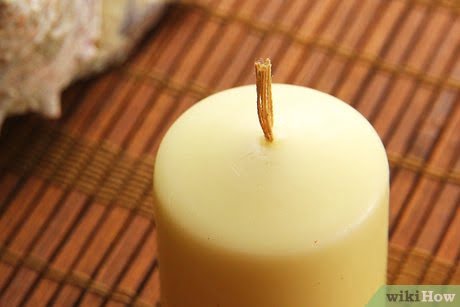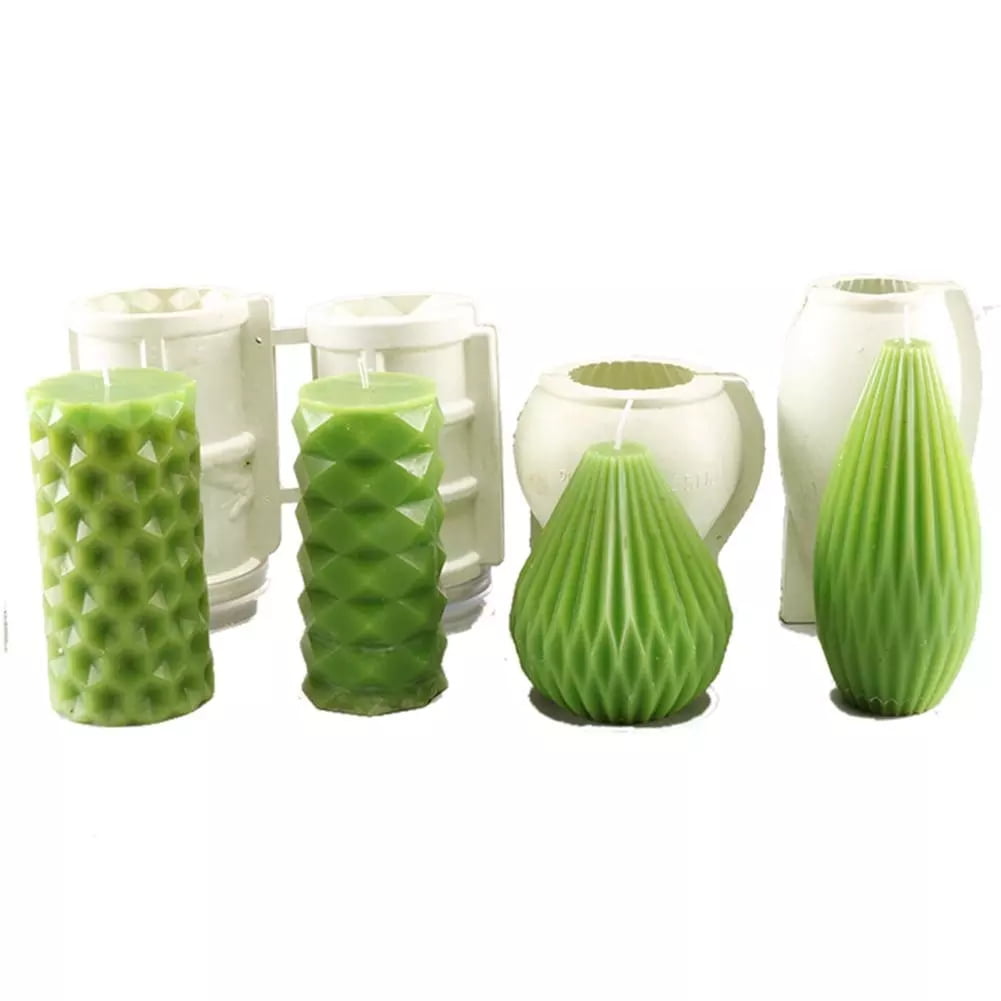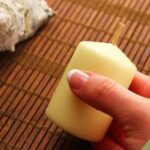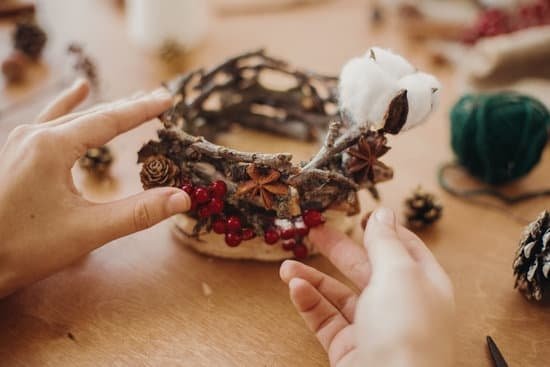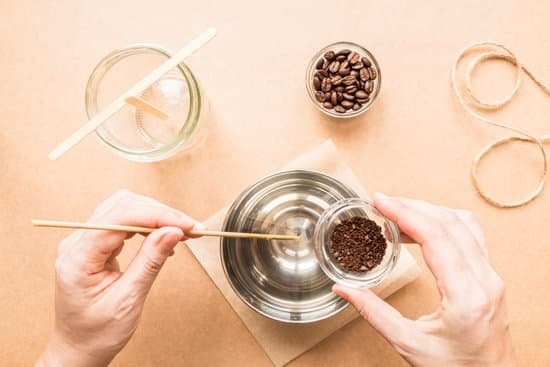Have you ever wanted to create your own candles and bring a warm, soothing ambiance into your home? Learning how to start making candles at home is not only a fulfilling hobby but also a money-saving opportunity. In this article, we will explore the benefits of making candles at home, the essential supplies needed for candle making, and provide a comprehensive guide on crafting your first candle.
Making candles at home can be a wonderful hobby that allows you to express your creativity and create unique pieces that reflect your personal style. Not only does it provide a sense of accomplishment, but it also offers you the chance to customize every aspect of your candles – from choosing the fragrance to selecting the wax and colors.
Whether you prefer scented or unscented candles, container or pillar candles, the possibilities are endless when it comes to creating beautiful and personalized pieces for yourself or as gifts for others.
Apart from being an enjoyable hobby, making candles at home also presents a money-saving opportunity. Store-bought candles can be expensive, especially if you prefer high-quality ones with unique designs and scents. By learning how to make your own candles, you can save money in the long run while still enjoying the warmth and charm that candles bring into your living space.
So if you’re ready to dive into the world of candle making, continue reading to explore the benefits of this delightful hobby and discover everything you need to know about getting started. From gathering essential supplies to choosing the right wax and adding fragrance, we’ll guide you through each step of the candle-making process. Get ready to embrace the art of candle making and enjoy the fruits of your labor.
Benefits of Making Candles at Home
Making candles at home is not only a fun and creative hobby, but it also offers several benefits that make it worth pursuing. DIY candle making allows you to have full control over the ingredients used, ensuring that your candles are made with natural and non-toxic materials. This is especially advantageous for individuals with sensitivities or allergies to certain ingredients commonly found in store-bought candles, such as synthetic fragrances or dyes.
Additionally, making candles at home can be a money-saving opportunity. Compared to buying candles from stores, which can often be quite expensive, DIY candle making allows you to produce high-quality candles at a fraction of the cost. With some practice and experimentation, you can create beautiful and long-lasting candles that rival those sold in stores.
Furthermore, making your own candles gives you the freedom to customize them according to your preferences. You can choose from a wide variety of wax types, scents, and colors to create unique and personalized candles that reflect your style and taste. Whether you prefer floral aromas, vibrant colors, or minimalist designs, the possibilities are endless when it comes to DIY candle making.
| Benefits of Making Candles at Home |
|---|
| 1. Allows control over ingredients |
| 2. Cost-effective compared to store-bought candles |
| 3. Offers customization options |
Gathering Supplies
Before you can start making candles at home, it’s important to gather all the necessary supplies and equipment. Having the right materials will ensure that your candle-making process goes smoothly and that you achieve the desired results. Here are some essential items you will need:
- Wax: The most important material for candle making is wax. There are several types of wax available, such as paraffin wax, soy wax, beeswax, and palm wax. Each type has its own unique characteristics and melting points, so it’s important to choose the right type of wax for your specific project.
- Wicks: Wicks are another crucial component in candle making. They come in different sizes and thicknesses, depending on the size of your candles. It’s important to choose wicks that are appropriate for the diameter of your candle containers or molds.
- Containers or Molds: You’ll need containers or molds to pour your melted wax into. These can be glass jars, metal tins, silicone molds, or any other heat-resistant containers that can hold hot liquid safely.
- Thermometer: A thermometer is essential for monitoring the temperature of the melted wax. Different waxes require different melting temperatures, so it’s important to have an accurate thermometer to ensure that your candles turn out perfectly.
- Double Boiler or Melting Pot: To melt your wax safely and evenly, you’ll need a double boiler or a dedicated melting pot specifically designed for candle making. This will prevent the wax from scorching or overheating.
- Fragrance Oils: If you want scented candles, you’ll need fragrance oils or essential oils to add a pleasant aroma to your candles.
- Dye Blocks or Liquid Dyes: Color additives such as dye blocks or liquid dyes can be used to give your candles a vibrant hue.
- Mixing Tools: You’ll need stirring utensils such as spoons or heat-resistant spatulas to mix the wax, fragrance oils, and dyes together.
- Heat Source: A heat source such as a stove, hot plate, or an electric melter is necessary to melt the wax.
- Safety Equipment: Don’t forget to invest in safety equipment such as heat-resistant gloves and protective goggles to protect yourself from any potential accidents or burns during the candle-making process.
By gathering these essential materials and equipment, you’ll be well-prepared to start making candles at home. Experiment with different combinations of wax, fragrances, and colors to create unique candles that reflect your personal style and preferences. Enjoy the process of candle making while exploring your creativity and creating beautiful homemade candles that can be used for personal enjoyment or given as thoughtful gifts.
Choosing the Right Wax
Choosing the right wax is a crucial step in candle making as it greatly affects the quality and performance of your homemade candles. There are several types of waxes available, each with its own unique characteristics and advantages. In this section, we will explore different types of waxes commonly used for candle making and provide a comprehensive guide to help you select the perfect wax for your homemade candles.
Paraffin Wax
Paraffin wax is one of the most widely used waxes in candle making due to its affordability and versatility. It is derived from petroleum and comes in various melting points, allowing you to choose the right one based on your desired candle characteristics. Paraffin wax has excellent fragrance retention and provides a smooth and glossy finish to your candles.
Soy Wax
Soy wax is a popular choice among eco-conscious candle makers as it is made from renewable soybean oil. It burns cleaner than paraffin wax, producing less soot and toxins, making it a healthier option for both you and the environment. Soy wax also has good scent throw capabilities, meaning it can effectively carry fragrances.
Beeswax
Beeswax is another natural and sustainable choice for candle making enthusiasts. It is known for its beautiful golden color and subtle honey-like scent. Beeswax candles have a long burn time and emit negative ions that help purify the air when burnt. However, beeswax can be more expensive compared to other waxes.
Palm Wax
Palm wax is derived from palm oil and offers unique crystalline patterns when solidified, adding an artistic touch to your candles. It has excellent scent throw capabilities and good burn properties. However, it’s important to ensure that the palm oil used in palm wax production comes from sustainable sources to avoid contributing to deforestation.
Blends and Additives
Apart from the primary types of wax mentioned above, candle makers often experiment with different blends and additives to achieve desired characteristics such as hardness, burn time, and fragrance throw. Some commonly used additives include stearic acid for hardening the wax, vybar for enhancing scent throw, and microcrystalline wax for improving burning qualities.
When selecting the right wax for your homemade candles, consider factors such as your budget, environmental impact, fragrance requirements, and desired aesthetic appeal. It’s also helpful to experiment with different waxes and blends to find what works best for you. By choosing the ideal wax, you can create candles that meet your expectations and enhance your overall candle making experience.
Adding Fragrance
One of the most enjoyable aspects of making candles at home is the ability to customize their scent. Adding fragrance to your candles can create a unique and inviting atmosphere in your home or provide a delightful gift for friends and family. This section will explore techniques and tips to help you scent your candles to perfection.
When it comes to selecting the right fragrance for your homemade candles, there are several options available. Fragrance oils are the most common choice as they provide a wide range of scents and are specifically designed for candle making. Essential oils, on the other hand, offer natural scents but may have limitations in terms of scent throw and compatibility with certain waxes. It is important to choose fragrances that are specifically formulated for candle making to ensure optimal results.
To achieve the desired fragrance strength, it is essential to calculate the correct amount of fragrance oil needed for your specific wax type and container size. The general rule of thumb is to use 1 ounce (30 mL) of fragrance oil per pound (454 grams) of wax. However, this ratio can vary depending on the intensity of the scent you prefer and the type of wax being used.
When it comes to adding fragrance oils, timing is crucial. It is recommended to add them when the wax has reached a temperature between 180-185°F (82-85°C). This allows for better incorporation of the fragrance oil without compromising its integrity. Stir gently but thoroughly for about 2 minutes to ensure even distribution throughout the wax.
| Techniques | Tips |
|---|---|
| 1. Pre-blending: Mixing fragrance oils with a small amount of melted wax before adding them helps prevent clumping. | 1. Start with a small amount of fragrance oil and adjust according to personal preference. |
| 2. Layering: Create unique scent combinations by pouring multiple layers of differently scented wax. | 2. Be mindful of the compatibility of fragrances when layering. |
| 3. Double Pour: For a more intense fragrance, reserve a small amount of melted wax and add additional fragrance oil to it. Pour this second layer over the first after it has partially set. | 3. Allow candles to cure for at least 48 hours before testing the scent throw. |
With these techniques and tips in mind, you can confidently experiment with different fragrances and create beautifully scented homemade candles that will delight your senses and those of others.
Fun with Colors
Adding color to candles not only enhances their aesthetic appeal but also allows you to customize them to fit any setting or occasion. There are various methods and techniques that you can use to color your homemade candles. Here are some fun ways to explore different methods of coloring your candles:
Liquid Dye
One of the most popular methods for coloring candles is by using liquid dyes. They come in a wide range of colors, making it easy to achieve vibrant and bold hues. Liquid dyes are typically added during the melting process when the wax is still in a liquid state.
Start by adding a few drops of dye to the melted wax and mix well until the desired color is achieved. Keep in mind that liquid dyes can vary in intensity, so it’s best to start with a small amount and gradually add more if needed.
Dye Chips or Blocks
Dye chips or blocks are another commonly used method for coloring candles. These concentrated pieces of colored wax are available in various shades and can be easily melted into the candle wax. To use dye chips or blocks, simply add them to the melting wax and stir until fully dissolved. The color intensity can be adjusted by adding more or fewer chips/blocks.
Powdered Pigments
Powdered pigments offer a wide range of colors and allow for greater control over color intensity. These pigments can be mixed into the melted wax using a spoon or spatula until fully incorporated. It’s important to note that powdered pigments may clump together, so make sure to break up any clumps before adding them to the wax.
Natural Materials
For those looking for more natural options, there are several materials that can be used to add color to your homemade candles. Consider using items such as dried flowers, herbs, spices, or even fruit peels to create unique and natural color variations. These materials can be added directly to the wax during the melting process or infused in oils beforehand.
Remember to always start with a small amount of colorant and test it on a small batch of wax before committing to a larger project. This will help you achieve the desired color and avoid wasting materials if adjustments need to be made. Experimenting with different coloring methods is part of the fun when making candles at home, so don’t be afraid to get creative and try new techniques to achieve stunning results.
Step-by-Step Candle Making Process
Making candles at home can be a rewarding and creative hobby. It allows you to customize your own scents, colors, and designs while also saving money compared to purchasing expensive store-bought candles. If you’re new to candle making, it’s helpful to have a step-by-step guide to follow for your first candle.
Gathering Materials
Before getting started, gather all the necessary materials and equipment for candle making. This includes:
- Wax: Choose the type of wax that suits your needs, such as soy wax, beeswax, or paraffin wax.
- Wicks: Select appropriate wicks based on the size of your container or mold.
- Fragrance oils or essential oils: Pick scents that you enjoy and that complement each other.
- Colorants: Decide if you want to color your candles and choose suitable colorants like dyes or crayons.
- Containers or molds: Use heat-resistant containers like glass jars or aluminum molds to pour your wax into.
- Thermometer: Invest in a reliable thermometer to monitor the temperature of the wax throughout the process.
- Pouring pot or double boiler: Use a pouring pot specifically designed for candle making or create a double boiler using two pans.
- Spatula or stirring utensil: Have a dedicated utensil for stirring and mixing your ingredients properly.
The Candle Making Process
- Melt the Wax: Place the wax in the pouring pot or double boiler and melt it over low heat. Stir occasionally with a spatula until completely melted.
- Add Fragrance and Colorant: Once the wax has melted, remove it from heat and let it cool slightly (around 120-140°F). Add fragrance oil or essential oil to your desired scent strength and mix well. If you want colored candles, add the chosen colorant and stir until evenly dispersed.
- Prepare the Container or Mold: While waiting for the wax to cool, prepare the container by placing the wick in the center and securing it with a wick sticker or hot glue. If using a mold, apply mold release spray to ensure easy removal once the candle has hardened.
- Pour the Wax: Slowly pour the melted wax into your prepared container or mold, taking care not to disturb the wick. Leave some space at the top of the container or mold to allow for expansion.
- Allow to Cool and Set: Let the candle cool and harden completely, which usually takes several hours. Avoid moving or disturbing it during this time.
- Trim and Enjoy: Once fully cooled and set, trim the wick to about ¼ inch before burning. Light your handmade candle and enjoy its beautiful glow and fragrance.
By following these steps, you can create your first homemade candle with ease. Remember that practice makes perfect, so don’t be discouraged if your initial attempts are not perfect. Keep experimenting with different scents, colors, and techniques to develop your own unique candle-making style.
Safety Precautions
Candle making can be a fun and rewarding hobby, but it’s crucial to prioritize safety throughout the process. By following some important safety precautions, you can ensure a safe and enjoyable candle making experience. Here are some essential tips to keep in mind:
- Work in a Well-Ventilated Area: When melting wax and adding fragrance oils or dyes, it’s important to have proper ventilation. This will help prevent the buildup of fumes that could potentially be harmful when inhaled. Open windows or use an exhaust fan to improve air circulation in your workspace.
- Protect Yourself: Always wear protective gear such as gloves, safety goggles, and an apron or old clothes that you don’t mind getting dirty. Wax can be hot and may cause burns if it comes into contact with your skin. Safety goggles will protect your eyes from any splashes or spills.
- Keep Flammable Materials Away: Candles involve heat and open flames, so it’s crucial to keep flammable materials away from your workspace. Make sure there are no curtains, paper, or other flammable items nearby that could accidentally ignite when working with candles.
In addition to these general safety precautions, consider implementing the following measures for a safe candle making experience:
- Use temperature-controlled equipment: Ensure that your melting pot or double boiler is specifically designed for candle making and has a built-in temperature control feature. This will help prevent overheating of the wax, reducing the risk of fire hazards.
- Have a fire extinguisher nearby: Accidents can happen even when taking precautions. It’s always wise to have a fire extinguisher within reach in case of emergencies.
- Never leave candles unattended: Whether you’re melting wax or burning candles for testing purposes, never leave them unattended. Not only can this pose a fire hazard but also increase the risk of accidents.
By following these safety precautions and guidelines, you can create beautiful homemade candles while keeping yourself safe. Remember, safety should always come first, and taking the necessary steps will ensure that your candle making experience remains enjoyable and risk-free.
Troubleshooting
Introduction
Candle making can be a rewarding and enjoyable hobby, but like any craft, it comes with its fair share of challenges. As a beginner, you’re likely to encounter some common issues along the way.
However, with the right knowledge and troubleshooting techniques, you can easily overcome these hurdles and continue creating beautiful candles at home. In this section, we will discuss some of the most common problems faced by beginners in candle making and provide helpful solutions to ensure a smoother candle-making experience.
Melt Pool Issues
One common issue that beginners often face is uneven or tunneling melt pools in their candles. A melt pool is the liquid wax that forms as the candle burns, and it should ideally reach the edges of the container or mold to ensure an even burn. If your candle has uneven melt pools or tunneled wax, there are a few things you can try to fix it:
- Trim the Wick: Long wicks can cause excessive heat and may result in tunneled melt pools. Try trimming your wick to about ¼ inch before lighting the candle.
- Use Properly Sized Wicks: Choosing the right size wick for your container or mold is crucial. A wick that is too small may not create a strong enough flame to melt all of the surrounding wax, leading to tunneling.
- Allow Sufficient Burning Time: When you first light a candle, make sure to let it burn for long enough so that the entire surface melts evenly before extinguishing it. This will help prevent tunneling in future burns.
Fragrance Issues
Another challenge beginners may face is achieving a strong and long-lasting fragrance in their homemade candles. If you find that your candles lack scent throw or don’t retain their fragrance after burning, consider these solutions:
- Choose Quality Fragrance Oils: Using high-quality fragrance oils specifically designed for candle making can make a significant difference in scent throw. Avoid using essential oils, as they may not have the same intensity or longevity.
- Optimize Fragrance Load: Each fragrance oil has a recommended usage rate. Using too little fragrance oil can result in a weak scent throw, while using too much may lead to poor burn performance. Follow the suggested guidelines provided by the manufacturer to achieve the best results.
- Cure Your Candles: Allowing your candles to cure for at least a week before burning them can help enhance their scent throw. During this time, the fragrance oil blends with the wax and gains strength.
By addressing these common troubleshooting issues, you’ll be well on your way to creating candles that burn evenly and smell wonderful. Don’t be discouraged if you encounter some hurdles along the way – every candle maker started as a beginner. With practice and persistence, you’ll become more experienced and confident in your candle making skills.
Candle Packaging and Presentation
Candle Packaging:
One important aspect of homemade candle making is the presentation and packaging of your finished products. The way you present and package your candles can significantly enhance their visual appeal and make them more attractive to potential buyers or gift recipients. Here are some creative ideas for showcasing and gift-wrapping your homemade candles.
Labeling
Adding a label to your candles not only adds a professional touch but also provides essential information about the scent, ingredients, and burn time. Consider designing custom labels that reflect the style or theme of your candles. You can use various materials such as kraft paper, linen, or waterproof vinyl for the labels. Make sure to include safety instructions on the labels as well.
Unique Containers
Choosing unique containers for your candles can make them stand out. Consider using vintage teacups, mason jars, or even repurposing old glassware or ceramic containers. Not only will these containers add character to your candles but they can also serve as decorative items once the candle has been burned.
Gift Wrapping
When it comes to gift-wrapping your homemade candles, there are countless options to explore. Consider using eco-friendly materials such as brown kraft paper, twine, or fabric wraps that can be reused or recycled. For a more personalized touch, you can create custom gift tags or attach dried flowers or herbs with a ribbon.
Presentation:
Aside from packaging, how you present your homemade candles is equally important in creating an appealing display. Here are some ideas for showcasing your candles:
Display Stand
Investing in a display stand will help you showcase your candles in an organized and visually pleasing manner. Choose a stand that complements the overall aesthetic of your candles and allows customers or guests to easily see and access each candle.
Styling Props
Consider incorporating props and decorations that enhance the theme or vibe of your candles. For example, if you have a collection of beach-themed candles, adding seashells or sand as styling props can create a cohesive and eye-catching display.
Lighting and Ambiance
Lighting plays a crucial role in creating an inviting atmosphere for your candle display. Consider using soft lighting, such as string lights or tea light candles, to illuminate your displayed candles. This will not only draw attention to your products but also give customers a glimpse of the cozy ambiance they can expect when they light the candle at home.
Remember that the packaging and presentation of your homemade candles should align with the overall brand image you want to convey. Whether you’re selling your candles or gifting them to friends and family, putting effort into the packaging and presentation shows that you value your craft and enhances the overall experience for the recipient.
Turning Your Hobby into a Business
Starting your own candle making business can be a rewarding and profitable venture. If you have a passion for making candles and want to expand beyond just a hobby, there are several steps you can take to turn your love for candle making into a successful business.
Firstly, it is important to establish your target market. Consider who your ideal customers would be and what type of candles they would be interested in purchasing. Are you targeting individuals who prefer natural ingredients or those who enjoy unique and decorative candles? This will help you determine the style, design, and scent of your candles.
Next, create a brand identity that reflects the values and aesthetics of your candles. This includes designing a logo, choosing packaging materials, and creating a cohesive look for your products. A strong brand will help set you apart from competitors and attract potential customers.
In order to sell your homemade candles, you need to explore different sales channels. Online platforms such as Etsy or Shopify provide an easy way to showcase and sell your products to a wide audience. You can also consider selling at local craft fairs or partnering with small boutiques that align with your brand.
To effectively market your candle business, utilize social media platforms such as Instagram or Facebook to showcase your creations and engage with potential customers. You can also collaborate with influencers or bloggers in the home decor or wellness niche to promote your products.
Lastly, don’t forget about the legal aspects of running a business. Registering your business name, obtaining any necessary licenses or permits, and ensuring compliance with product safety regulations are all crucial steps when turning your hobby into a legitimate business.
Table: Candle Making Business Startup Checklist
| Steps | Details |
|---|---|
| Evaluate Target Market | Determine who your ideal customers are and what they are looking for in a candle. |
| Create a Brand Identity | Design a logo, choose packaging materials, and create a cohesive look for your products. |
| Choose Sales Channels | Decide whether to sell online, at local markets, or through partnerships with boutiques. |
| Market Your Business | Utilize social media platforms and collaborate with influencers to promote your candles. |
| Legal Considerations | Register your business name, obtain necessary licenses or permits, and ensure compliance with product safety regulations. |
By following these steps and putting in the necessary effort and dedication, you can successfully turn your candle making hobby into a thriving business. Remember to continuously innovate, listen to customer feedback, and stay true to your brand identity. With time and perseverance, you can enjoy the rewards of both creative fulfillment and financial success.
Conclusion
In conclusion, starting to make candles at home can be a rewarding and fulfilling hobby. Not only does it provide a creative outlet, but it also offers the opportunity to save money by making your own candles instead of purchasing them. Throughout this article, we have explored the various benefits of DIY candle making, from the freedom to choose your own materials and scents to the joy of creating personalized gifts for loved ones.
By gathering the essential supplies and equipment, choosing the right wax, adding fragrance, and exploring different methods of coloring, you can create beautiful and unique candles that reflect your personal style. The step-by-step candle making process outlined in this article provides a detailed guide for beginners to craft their first candle at home. Additionally, safety precautions are crucial to ensure a safe and enjoyable experience.
Despite some potential challenges for beginners, such as troubleshooting common issues that may arise or deciding on packaging and presentation, with practice and perseverance, these obstacles can easily be overcome. Furthermore, if you find yourself truly passionate about candle making, there is even the potential to turn your hobby into a business by selling your homemade candles.
In closing, embracing the art of candle making opens doors to creativity and allows you to enjoy the fruits of your labor. Whether it’s creating a tranquil ambiance in your own home or sharing handmade gifts with others, making candles at home is an enriching experience that brings joy and satisfaction. So why not give it a try? Start gathering your supplies today and embark on this delightful journey of self-expression through candle making.

Welcome to my candle making blog! In this blog, I will be sharing my tips and tricks for making candles. I will also be sharing some of my favorite recipes.

